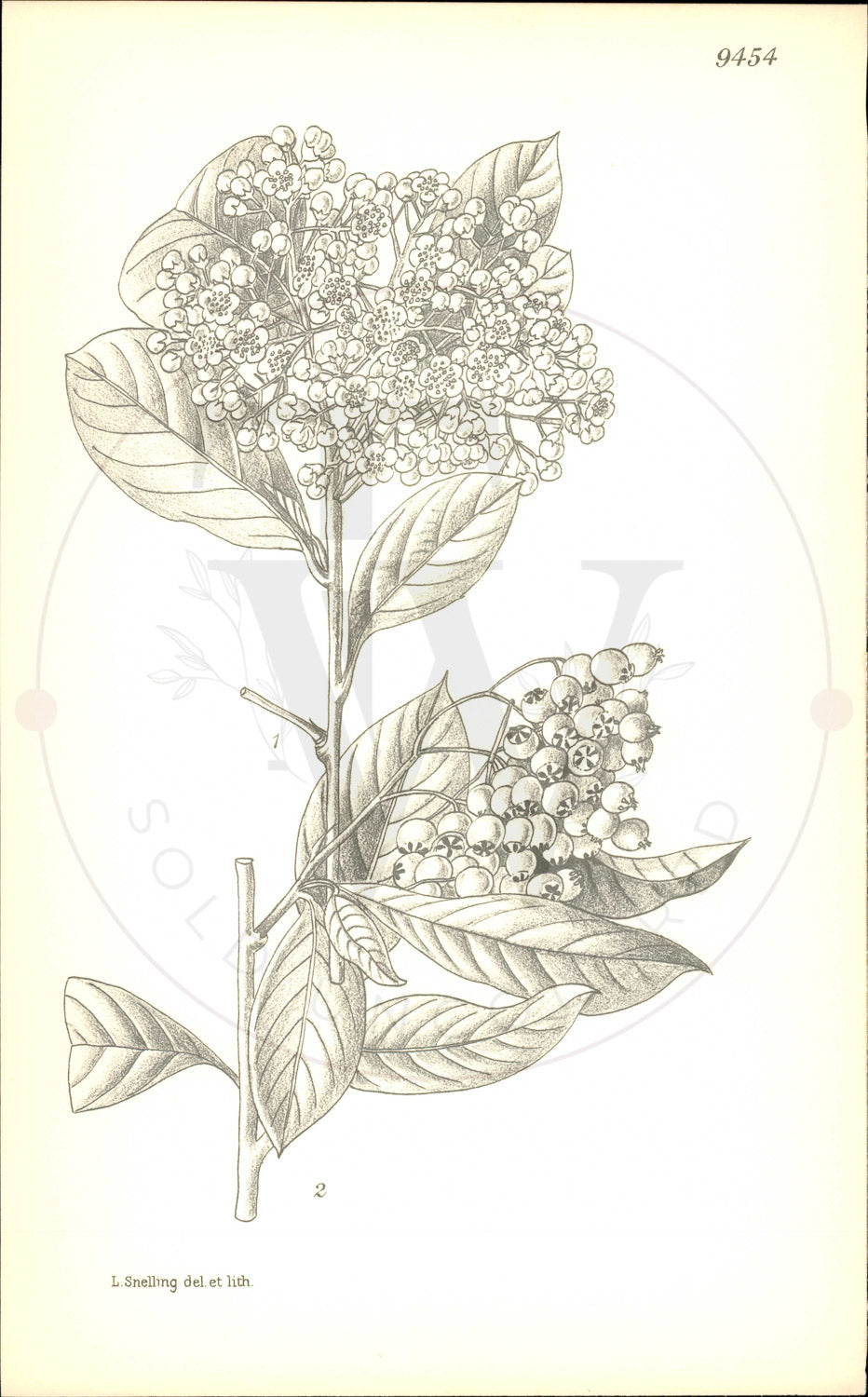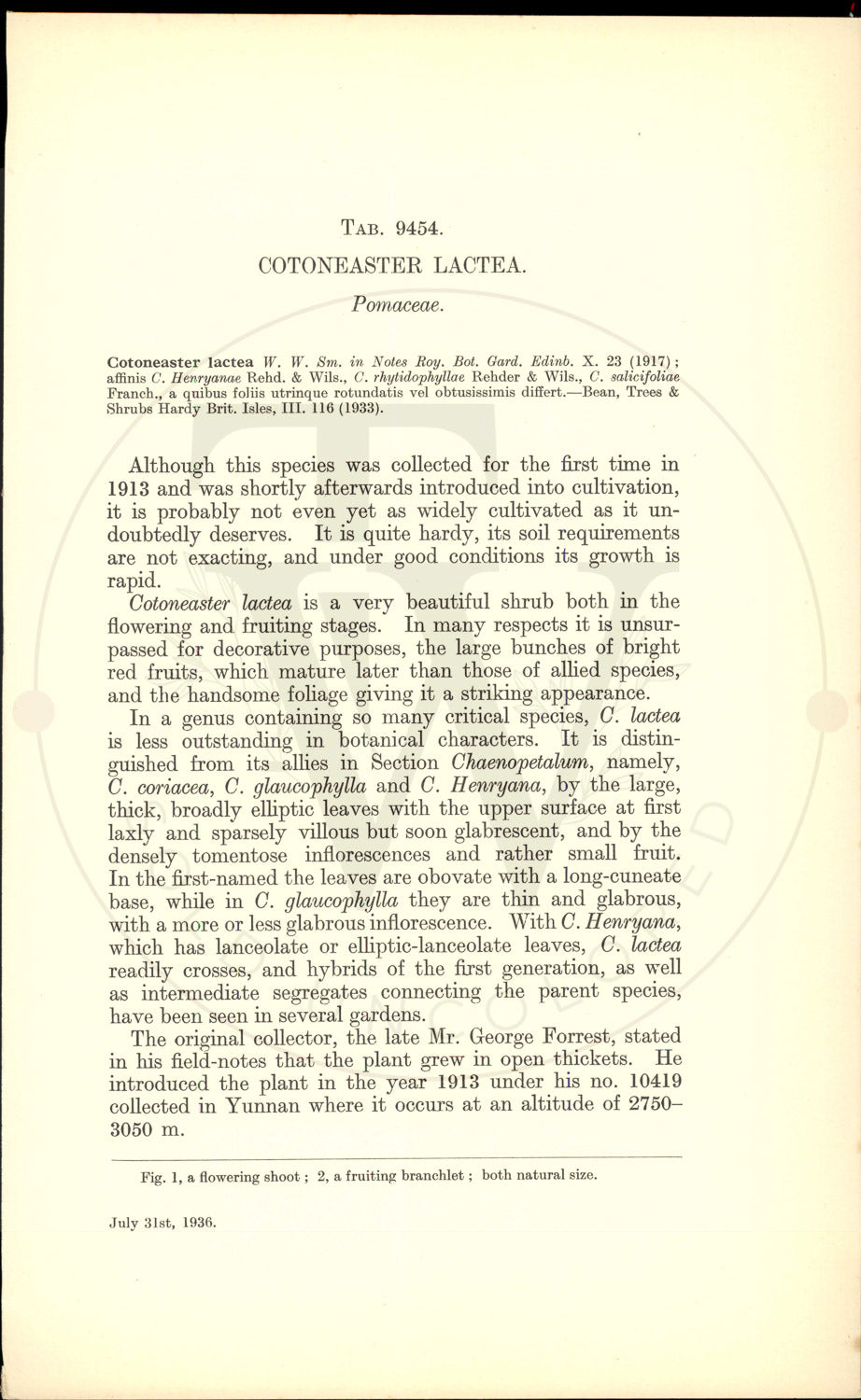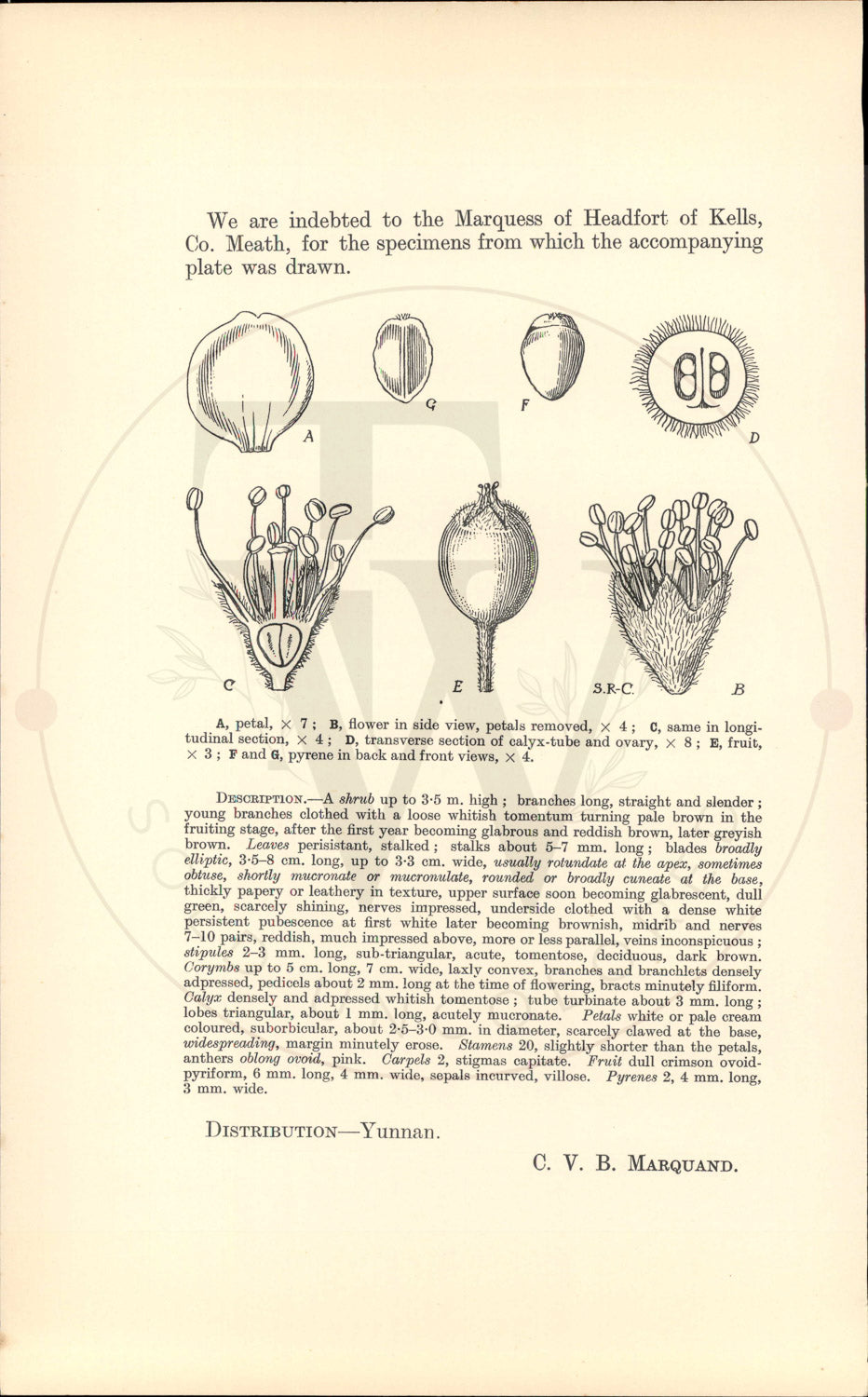Curtis Botanical Magazine
Plate 9454 - Cotoneaster lactea
Plate 9454 - Cotoneaster lactea
Couldn't load pickup availability
Curtis's Botanical Magazine - Plate 9454
Cotoneaster lactea
Publication Date: January 1st, 1934
Distribution: -Yunnan • Tab Author: C. V. B. MARQUAND
Botanical Description
Cotoneaster lactea is a very beautiful shrub both in the flowering and fruiting stages. In many respects it is unsur- passed for decorative purposes, the large bunches of bright red fruits, which mature later than those of allied species, and the handsome foliage giving it a striking appearance. In a genus containing so many critical species, C. lactea is less outstanding in botanical characters. It is distin- guished from its allies in Section Chaenopetalum, namely, C. coriacea, C. glaucophylla and C. Henryana, by the large, thick, broadly elliptic leaves with the upper surface at first laxly and sparsely villous but soon glabrescent, and by the densely tomentose inflorescences and rather small fruit. In the first-named the leaves are obovate with a long-cuneate base, while in C. glaucophylla they are thin and glabrous, with a more or less glabrous inflorescence. With C. Henryana, which has lanceolate or elliptic-lanceolate leaves, C. lactea readily crosses, and hybrids of the first generation, as well as intermediate segregates connecting the parent species, have been seen in several gardens. The original collector, the late Mr. George Forrest, stated in his field-notes that the plant grew in open thickets. He introduced the plant in the year 1913 under his no. 10419 collected in Yunnan where it occurs at an altitude of 2750- 3050 m.
About This Print
Original black and white uncolored botanical print from Curtis's Botanical Magazine (established 1787). This 9000s series print is from unissued publisher stock, never hand-colored, representing the authentic plate as it appeared in the magazine. Edited by Sir Arthur William Hill for The Royal Horticultural Society, London.
Share







